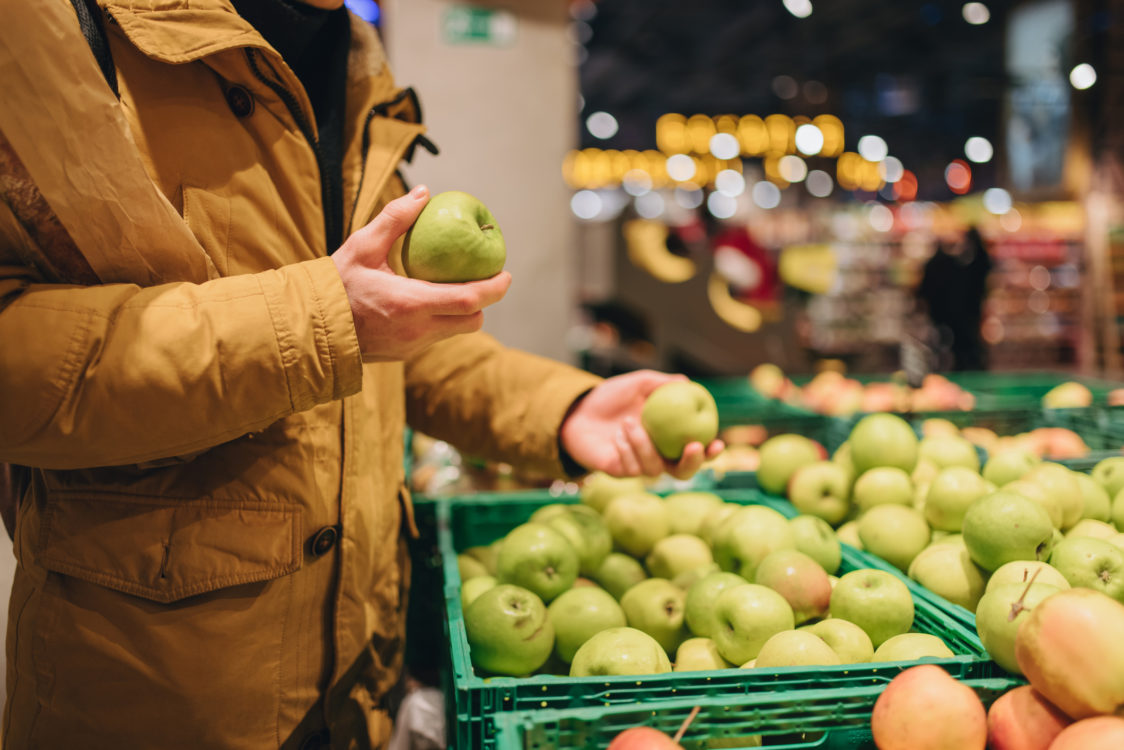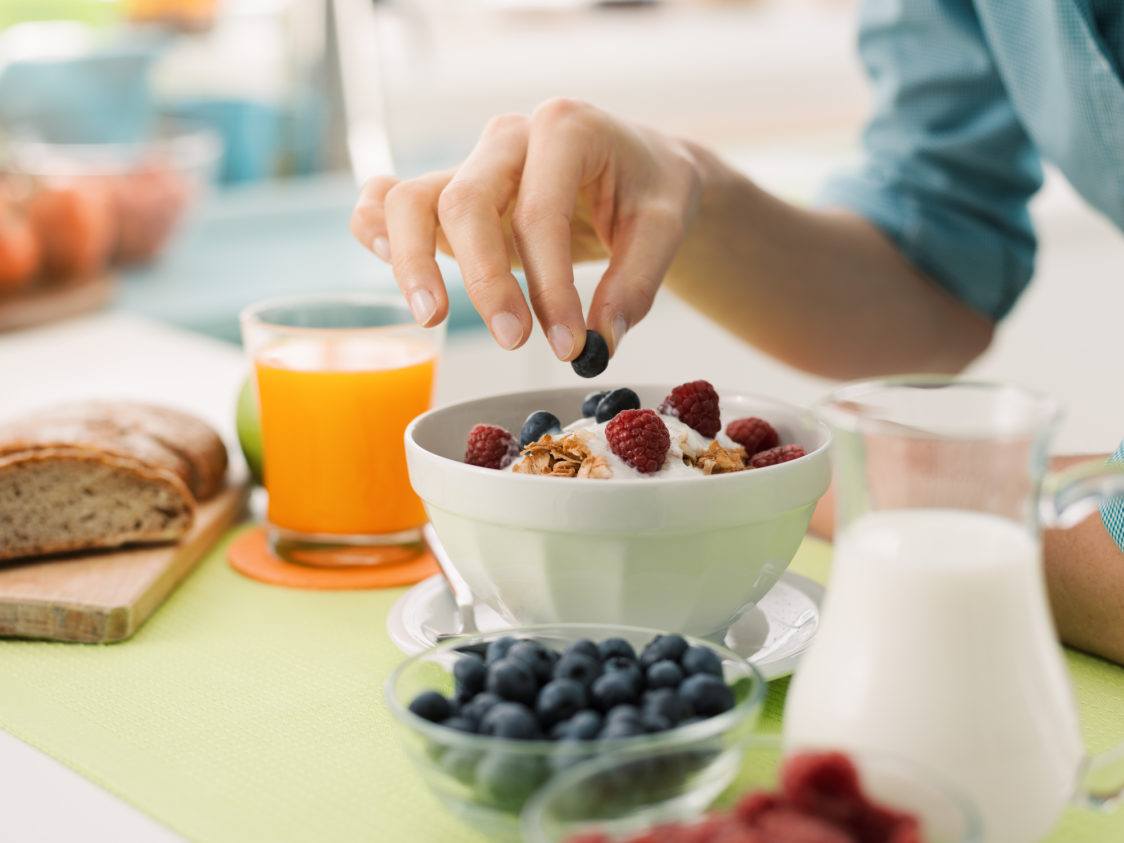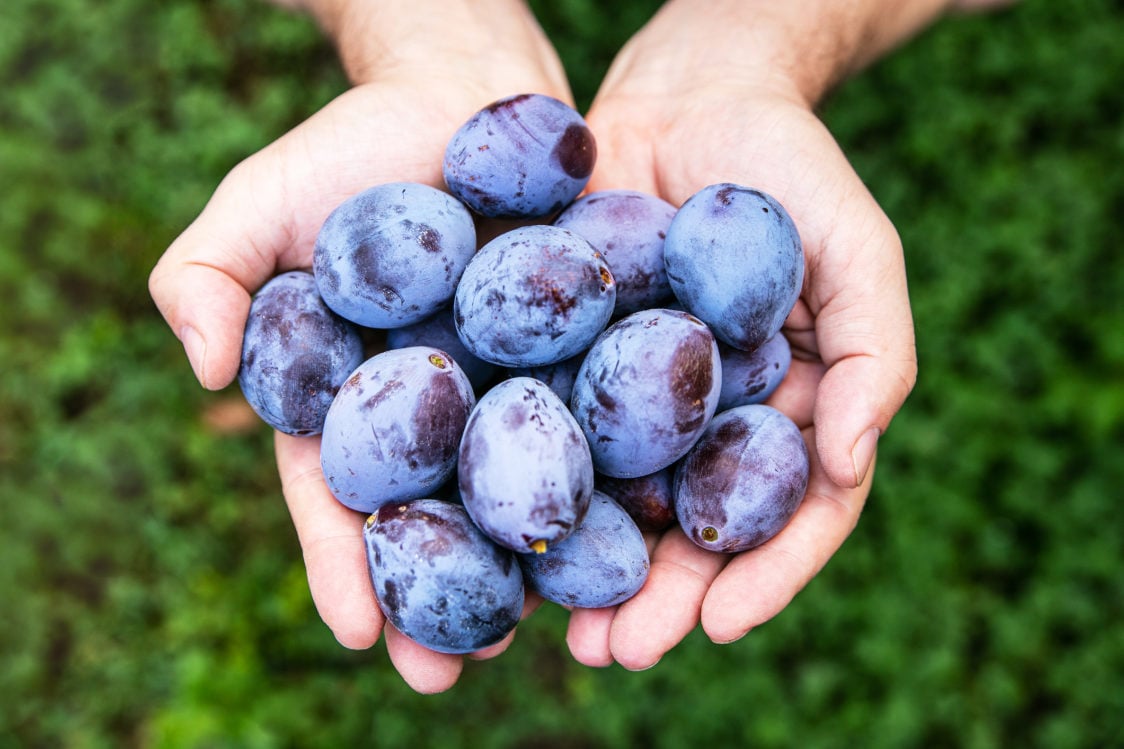Table of Contents
There’s no doubt that eating fruit is great for your health. All of it is packed with important vitamins, minerals and antioxidants, which is the main reason why it is a staple of a healthy diet for people of all ages, from adults to infants. Just remember your school days: your lunchbox would no doubt commonly feature a banana, a tangerine or some apple slices. Your parents knew what they were doing. Once you get older, you might become interested in finding out what particular nutrients all of that fruit actually packs. That’s precisely what we’re going to discuss in today’s article.
What does fruit contain?
As stated above, fruit is an outstanding source of a variety of vitamins and minerals, each one of which plays an indispensable role in your body. What’s more, it is well-known to contain a slew of antioxidants, which help combat oxidative stress and free radicals in the body. But that’s not all. Fruit is commonly rich in dietary fiber, which plays a crucial role in the proper functioning of our intestines, and, in fact, our entire digestive system. Fiber is also indispensable for the health of our microbiome. It contributes to the proliferation of beneficial bacteria, which contribute to the overall health of the body. Taking good care of your microbiome will reward you with easier weight loss, better immunity, less severe allergic reactions, better mental health and helping you avoid intestinal inflammations. [1–3]
Furthermore, we must not forget about the fruit sugar, which is a great source of energy. And where does fruit get its juiciness from? Water, of course. Strawberries, for example, are made of 90% water. This means eating fruit can boost your water intake, and in so doing contribute to the optimal hydration of your body. Additionally, thanks to fruit’s low to medium glycaemic index (due to the high fiber content which slows down the nutrient absorption), fruit sugar isn’t to be dreaded even by those of us suffering from diabetes. This means that fruit can be, after consulting a practitioner, a part of a healthy diet even to people suffering from this rather serious ailment. [4]
What benefits does eating fruit regularly have?
Even though eating fruit is a great boon to your health, don’t expect to become an immortal superhero after eating an apple. However, if you consume fruit on regular basis, you will no doubt, begin to observe its health benefits on your own body. [5–10]
Eating fruit regularly can help you:
- improve your digestion
- avoid chronic diseases
- lower the risk of developing a cardiovascular disease
- lower the risk of developing asthma or diabetes
- lower the risk of developing a variety of cancer types
- satisfy hunger easily
- lose weight

How much fruit should you eat?
Would you like to know how much fruit you should be eating? General health guidelines recommend eating around 400 g of vegetables and 200 g of fruit a day. If you eat two average-sized pieces of fruit a day, you’re easily reaching this quota. Results of extensive research suggest that to derive the maximum health benefit from eating fruits and veggies, we should consume up to 800 g a day in total. Having this many fruits and veggies in a diet has been associated with effective prevention against cardiovascular diseases. As we know, these medical conditions are common among people suffering from obesity and overweight. This means you shouldn’t be scared of eating fruits even if you’ve already got a few extra kilos around your frame. [6] [11]
You can easily treat yourself to more than just two pieces a day, especially if you’re an active athlete. Eating fruit isn’t to be shied away, even if you’re trying to lose weight. While it is true that fruit packs a dose of simple sugars, it also contains a variety of phytochemicals, which can have anti-obesitogenic properties. [6] [11]
There’s a myriad of ways you can use fruit to enrich your meals. For example, mashed bananas are ideal for sweetening up your breakfast porridge, and combine perfectly with peanut butter. There’s nothing quite as simple and satisfying as biting into a fresh apple or pear to chase away the hunger during a busy day. Add those sliced into a bowl of yoghurt packed with protein together with some nuts, and you’ve just prepared a balanced and satiating snack with a good dose of all macronutrients.
Maybe you’re asking yourself what time of the day is the best for eating fruit. The answer is very simple: anytime. Even though fruit is a quick source of energy, it doesn’t mean it’s immediately stored as fat unless you head into gym right away. What decides whether you’ll gain or lose weight is your overall calorie balance. If you’re in a calorie surplus, your excess energy intake will store as fat, no matter whether it comes from fruit, rice, meat or vegetables. That means there’s no need to worry about eating fruit even in the late afternoon or evening. You don’t need to be a nutritionist to know that having an orange invariably beats a bag of chips, no matter the time of the day.
Did you believe that having fruit in the afternoon makes your belly grow? If so, you might want to explore other myths in our article dedicated to the topic: Myths and Facts About Fruit: Does It Detox Your Body and Can You Eat It In the Afternoon Without Gaining Weight?

You might be interested in these products:
The vitamin and mineral contents in fruits
But now, let’s have a look at what we’re here for: the amounts of calories, macronutrients, vitamins and minerals present in various types of fruit. With each fruit, we’ll list only those minerals and vitamins that are relevant in terms of the recommended daily intake. All of the values listed here are average, and therefore only serve as a rough guide. Different species of a group of fruits might have varying values, which also depends on how ripe the particular fruit in question is.
And we won’t skip on mentioning any health benefits and tips for preparing delicious treats using these fruits.
1. Apple
“An apple a day keeps the doctor away” is a cliché you’ve heard many times. To be sure, eating apples won’t guarantee you’ll never ever experience a medical issue again. However, an apple packs so much healthy stuff, it’s really a sort of defence shield for your health.
Nutrition facts for 100 g of apple
Energy: 53 kcal
Carbohydrates: 11,4 g
of which are sugars: 10,4 g
Protein: 0,3 g
Fats: 0,2 g
Dietary fiber: 2,4 g
What makes apples good for you?
Aside from their delicious taste, apples stand out for their high contents of antioxidants, which help protect the cells of your body from oxidative stress. Ensuring a high enough intake of antioxidants can help you avoid chronic diseases and even prevent premature ageing of your body cells. [12–13]
Eating apples correlates with lower risk of developing heart disease. This might be, in addition to the present micronutrients, due to high content of healthy dietary fiber, which is crucial for your intestinal microbiome. As we’ve already mentioned, this can have an impact on your ability to lose weight, immune system as well as mental well-being. Some studies also suggest that eating an entire average-sized (166 g) apple every day may help prevent development of cancer. This applies especially to the cancer of the oral cavity and pharynx, esophagus, intestines and larynx, as well as breast or ovary cancer. [12–13]
Other health benefits of apples are connected to their high contents of vitamins and minerals. The biggest pride of all apples is their exceptional content of vitamin C, which contributes to the proper functioning of immunity, nervous system as well as mental functions. In addition, it is absolutely crucial for our musculoskeletal system – without vitamin C, collagen, an indispensable part of all connective tissues, could not form in the body. The apple further contains magnesium, which helps reduce fatigue and exhaustion, as well as vitamin K, which impacts proper blood coagulation. [15]
Athletes in particular will certainly appreciate the rich contents of potassium and magnesium. These minerals contribute to the proper functioning of muscles and the nervous system of the body. It is therefore no surprise these minerals are popular among those of us looking to minimize the risks of muscle cramps. Apples, however, don’t contain quite as large a pool of these substances as the specialized nutrition supplements. Nevertheless, eating them can significantly improve your intake.
What can be prepared with apples?
Naturally, there’s more than just one type of apple. It’s likely that even your local store offers a relatively wide selection of apples that vary in their taste and texture, as well as their health properties and nutrient profiles. Gala apples are, for example, very sweet and suitable for direct consumption or for preparing fruit jars. The more acidic Granny Smiths are ideal for baking. Golden Delicious, on the other hand boast a particularly rich flavour and almost a creamy consistency. How you use all of this variety, is, of course, ultimately up to you. For some extra inspiration, we’ll throw in a few great recipes using apples. [16]
Try these recipes using apples
- Soft Apple Pie with Cinnamon
- Apple Pancakes
- Overnight Fermented Oats with Fruit and Nuts
- Juicy Apple Strudel
- Juicy Apple & Poppy Seed Pie
- Oat Cake with Apple and Peanut Butter
- A Simple Apple Strudel with Curds, Nuts and Cinnamon

2. Pear
Pear trees produce fruits popular for their deliciously sweet pulp. Depending on the variety, the times of harvest and storage may vary quite considerably. Pears often make for an integral part of many healthy cakes and other desserts. Christmas lovers will no doubt recognize caramelized pears sold at winter markets as an indispensable part of the holiday atmosphere.
Nutrition facts for 100 g of pears
Energy: 58,3 kcal
Carbohydrates: 12,4 g
of which are sugars: 9,8 g
Protein: 0,4 g
Fats: 0,1 g
Dietary fiber: 3,1 g
Vitamins in 100 g of pear:
- vitamin C: 4,2 mg
- vitamin K: 4,5 mcg
- vitamin B9: 7 mcg
- trace amounts: vitamin E, vitamin B1, vitamin B2, vitamin B3, vitamin B6
Minerals in 100 g of pear:
- copper: 0,1 mg
- potassium: 119 mg
- magnesium: 7 mg
- trace amounts: manganese, phosphorus, iron, calcium and zinc. [17]
What makes pears good for you?
Pears can also boast of their content of flavonoids and antioxidants, which help the body fight oxidative stress and possibly slow down the ageing of cells. The antioxidant effects have been demonstrated even in pears stored away for 8 months, which means you can easily make a decent supply in your pantry. You may also be surprised that pears can have a positive effect on hyperglycaemia and high blood pressure associated with type 2 diabetes. Finally, pears are traditionally used to relieve a hangover after a difficult night out, as well as for relieving coughs and even constipation. [18–20]
The active role pears can play in the health of your intestines is mainly due to the high amount of dietary fiber, up to 71% of which is insoluble, with the remaining 29% being made up of soluble fiber.
- Insoluble fiber increases its volume in the intestines and speeds up the process of digestion. This type of fiber is very important in terms of prevention of constipation and irregular stool, as well as of cancer of the colon and rectum.
- Soluble fiber serves as a prebiotic in your intestines. Prebiotic mass provides food for the beneficial bacteria that live in your digestive tract. In addition, once this fiber mixes with a liquid, it can increase its volume several times, which slows down the emptying of the stomach causing you to feel satiated after eating for much longer. This is something you will appreciate especially when trying to lose weight. [21]
The positive effects of pears for your body also rest with the richness in vitamins and minerals. For example, vitamin C positively affects your immunity and collagen production. However, we must not forget the role of copper, which affects energy metabolism, connective tissue health, the functioning of your nervous system and provides extra protection against oxidative stress. What’s more, women in particular will certainly appreciate copper’s beneficial effects on the health of hair and skin pigmentation. [15]
What can you make using pears?
Pears are, similarly to apples, extraordinarily versatile in the kitchen. They taste great on their own, or ground down into juice or a smoothie. You can use them to top off your oatmeal or bake them into some delicious pastry. And how about a tasty pear crumble? Absolutely anyone can make it with our easy recipe.

3. Banana
Who doesn’t love the sweet taste of banana that elevates any dessert treat to the next level? And just you wait when you find out that bananas actually contain a rich dose of important micronutrients.
Nutrition facts for 100 g of banana
Energy: 93 kcal
Carbohydrates: 20,2 g
of which are sugars: 12,2 g
Protein: 1,1 g
Fats: 0,3 g
Dietary fiber: 2,6 g
Vitamins in a 100 g of banana:
- vitamin B6: 0,4 mg
- vitamin C: 8,7 mg
- vitamin B9: 20 mcg
- vitamin B2: 0,1 mg
- trace amounts: vitamin B3, vitamin B5, vitamin B1
Minerals in a 100 g of banana:
- manganese: 0,3 mg
- potassium: 358 mg
- magnesium: 27 mg
- copper: 0,1 mg
- trace amounts: phosphorus, calcium, iron, zinc and selenium [22]
What makes bananas healthy?
Bananas contain many bioactive compounds, such as phenols, carotenoids, biogenic amines or phytosterols, all of which have a slew of positive effects on the health of your body. Banana pulp in particular is rich in ingredients with high antioxidant potential and anti-tumor activity. Eating bananas can also have a positive effect on blood cholesterol levels. Finally, thanks to their high fiber content, they are also beneficial for your digestive tract. [23]
When it comes to minerals, bananas are well-known for being a great source of potassium. Studies show that increased intake of this important mineral associates with lesser risks of cardiovascular issues and brain strokes. In addition, potassium shows positive effects on your nervous system, muscle function as well as on maintaining normal blood pressure. Manganese, on the other hand, helps protect cells from oxidative stress and improves bone health. And finally, if you’re looking to strengthen your immunity, you will certainly appreciate a dose of vitamin C, bananas also provide quite richly. [15] [24]
What can you make using bananas?
Banana is a staple ingredient among the top tips for healthy breakfast meals of many fitness influencers, and as we all know, it’s just as delicious all on its own. Simply spread some cashew nut butter on top of it, enjoy the explosion of flavours. But of course, it’s equally useful in baking or preparing pancakes, as well as many other sweet treats.
Try these delicious recipes using bananas
- Healthy Mole Cake in a Glass
- Elephant Tear Cake with Chocolate, Banana and Cottage Cream Cheese
- Banana Oat Pancakes
- Flipped Banana Pie with Coconut
- Protein Doughnuts with Banana and Chocolate Syrup
- Vegan Banana Bread with Protein and Nut Butter

4. Berries
All the tiny berries you can pick on your hike in the woods, in your garden, or forage from the shelves of your local supermarket. Berries look great on top of your desserts, taste even greater, and what’s more important, they are packed with dietary fiber and many other substances that benefit your health. That’s more than enough reasons to make them a part of your diet. So what nutrients can we find in strawberries, raspberries and blueberries?
Strawberries
Nutrition facts for 100 g of strawberries
Energy: 32 kcal
Carbohydrates: 5,7 g
of which are sugars: 4,9 g
Protein: 0,7 g
Fats: 0,3 g
Dietary fiber: 2 g
Vitamins in 100 g of strawberries
- vitamin C: 58,8 mg
- vitamin B9: 24 mcg
- vitamin K: 2,2 mcg
- trace amounts: vitamin B6, vitamin B3, vitamin B1, vitamin E, vitamin B2, vitamin B5
Minerals in 100 g of strawberries
- manganese: 0,4 mg
- potassium: 153 mg
- magnesium: 13 mg
- trace amounts: calcium, iron, phosphorus and copper [25]
Blueberries
Nutrition facts for 100 g of blueberries
Energy: 59 kcal
Carbohydrates: 12,1 g
of which are sugars: 10 g
Protein: 0,7 g
Fats: 0,3 g
Dietary fiber: 2,4 g
Vitamins in 100 g of blueberries
- vitamin K: 19,3 mcg
- vitamin C: 9,7 mg
- vitamin B6: 0,1 mg
- vitamin E: 0,6 mg
- trace amounts: vitamin B1, vitamin B2, vitamin B3
Minerals in 100 g of blueberries
- manganese: 0,3 mg
- copper: 0,1 mg
- potassium: 77 mg
- iron: 0,3 mg
- trace amounts: calcium, magnesium, phosphorus and zinc [26]
Raspberries
Nutrition facts for 100 g of raspberries
Energy: 46 kcal
Carbohydrates: 5,4 g
of which are sugars: 4,4 g
Protein: 1,2 g
Fats: 0,7 g
Dietary fiber: 6,5 g
Vitamins in 100 g of raspberries
- vitamin C: 26,2 mg
- vitamin K: 7,8 mcg
- vitamin B9: 21 mcg
- vitamin E: 0,9 mg
- trace amounts: vitamin B6, vitamin B5, vitamin B3
Minerals in 100 g of raspberries
- manganese: 0,7 mg
- magnesium: 22 mg
- iron: 0,7 mg
- potrassium: 151 mg
- copper: 0,1 mg
- trace amounts: zinc, phosphorus, calcium [27]
What makes strawberries, raspberries and blueberries good for you?
All of these tiny berries stand out with their exceptionally high content of antioxidants, which help reduce oxidative stress in your body. This is also the reason why berries are often considered to belong among the superfoods. Ensuring a sufficient intake of these highly beneficial substances can significantly lower the risks of developing a variety of cancer types. Additionally, they boast high contents of dietary fiber, which ensures healthy intestinal microbiome and, as we already know, can help us lose weight by providing effective satiation. [31–32]
Research shows that regular consumption of strawberries can also have a positive effect on cholesterol levels. Blueberries, in turn, are known for their anthocyanins, and are used to support memory. Phenolic acids and flavonoids, such as anthocyanins, flavonols and tannins, also occur abundantly in most berries. These substances provide a whole variety health benefits , such as prevention of inflammations and cardiovascular diseases. There’s no doubt berries should be an integral part of our diets. [33–34] [41]
If you are interested in a healthy lifestyle, you will certainly appreciate the rich content of vitamins and minerals present in these fruits. Wild berries are known mainly for their high content of vitamin C, which supports your immune system, secures the proper function of your mental faculties and helps protect cells from oxidative stress. What’s more, the nutritional composition of berries also features vitamin K, which contributes to proper blood coagulation and bone health. There’s also the vitamin B9, which affects the growth of germ tissues during pregnancy, contributes to proper hematopoiesis, helps the functioning of mental faculties, boosts immunity and helps reduce fatigue and exhaustion. [15]
In terms of mineral contents, berries are rich in potassium, among others. Potassium is commonly sought after by athletes because it benefits the functioning of the nervous system and muscles. It can also be helpful in maintaining normal blood pressure. Another significant player is manganese, important for energy metabolism, while at the same time it helps protect cells from oxidative stress. [15]
What can you prepare using berries?
Whether you eat them on their own, or make them a part of a more complex dish, you can always count on their outstanding taste to brighten up your meal. Here’s a few inspiring recipes that involve berries as an irreplaceable ingredient.
Try these great recipes with strawberries, blueberries and raspberries
- Panna Cotta with Curd and Forest Fruit
- Homemade Strawberry Jam with Chia Seeds
- A Simple Oat Cake with Strawberries
- Frozen Yoghurt with Fruits, Chocolate, Granola and Nuts
- No-Bake Curd Cheesecake with Raspberries
- Three Unique Ways to Make Homemade Popsicles
- Protein pudding with chia seeds and raspberries

5. Stone fruits (drupes)
Pick, pluck & enjoy. Despite not looking much alike, apricots, cherries and plums all belong to the same family of drupes. They’re all different in their sizes, shapes and colors. Let’s have a closer look at their nutrition profiles.
Cherries
Nutrition facts for 100 g of cherries
Energy: 66 kcal
Carbohydrates: 13,9 g
of which are sugars: 12,8 g
Protein: 1,1 g
Fats: 0,2 g
Dietary fiber: 2,1 g
Vitamins in 100 g of cherries
- vitamin C: 7 mg
- vitamin K: 2,1 mcg
- trace amounts: vitamin B1, vitamin B2, vitamin B5, vitamin B6
Minerals in 100 g of cherries
- potassium: 222 mg
- manganese: 0,1 mg
- copper: 0,1 mg
- magnesium: 11 mg
- trace amounts: iron, phosphorus, calcium [28]
Plums
Nutrition facts for 100 g of plums
Energy: 48 kcal
Carbohydrates: 10 g
of which are sugars: 9,9 g
Protein: 0,7 g
Fats: 0,3 g
Dietary fiber: 1,4 g
Vitamins in 100 g of plums
- vitamin C: 9,5 mg
- vitamin K: 6,4 mcg
- vitamin A: 345 IU
- trace amounts: vitamin B1, vitamin B2, vitamin B3
Minerals in 100 g of plums
- potassium: 157 mg
- copper: 0,1 mg
- manganese: 0,1 mg
- trace amounts: magnesium, phosphorus [29]
Apricots
Nutrition facts for 100 g of apricots
Energy: 50 kcal
Carbohydrates: 9,2 g
of which are sugars: 9,2 g
Protein: 1,4 g
Fats: 0,4 g
Dietary fiber: 2 g
Vitamins in 100 g of apricots
- vitamin A: 1926 IU
- vitamin C: 10 mg
- vitamin E: 0,9 mg
- vitamin K: 3,3 mcg
- trace amounts: vitamin B1, vitamin B2, vitamin B3, vitamin B5, vitamin B6, vitamin B9
Minerals in 100g of apricots
- potassium: 259 mg
- copper: 0,1 mg
- manganese: 0,1 mg
- trace amounts: iron, magnesium, phosphorus [30]
What makes cherries, plums and apricots good for you?
The drupes, much like all the other fruits we’ve already talked about, once again boast a high content of antioxidants, which play an important role in your body. In addition to reducing oxidative stress, they can help prevent cardiovascular disease, inflammation, and, to some extent, certain types of cancer. And as you know, there can never be too much prevention, so it doesn’t hurt to add the stone fruits into your diet as well. [35–37]
Plums can play a very specific role in your body. Studies show they can help reduce blood pressure and prevent constipation. In a comparative study, plums outperformed the popular psyllium. Apricots, too, can have serious benefits for your digestive system. Regular consumption can lead to relief from the symptoms of esophageal reflux. They are also known for their high beta-carotene content, which is a precursor of vitamin A – a vitamin crucial for good skin health, among other things. [38–40]
Stone fruits also contain a wide spectrum of vitamins and minerals. Similarly to berries, drupes are rich in vitamin A and vitamin K, which is crucial for good blood coagulation. Once again, these fruits are also rich in manganese, potassium as well as copper, all of which are indispensable in many bodily processes. Copper, for example, is key for the good functioning of your immune system, healthy pigmentation of your skin and hair, and finally also plays a crucial role in transporting iron all round your body. [15]
What can you prepare using drupes?
Stone fruit is commonly used as an ingredient in simple leavened pies and cakes peculiar to Central European cuisine. They serve great as healthy sliced snacks as well as ingredients in smoothies. Check out our recipes for inspiration.
Try these recipes using plums, apricots and cherries
- Breakfast Plum Mug Cake
- Crunchy Plum Crumble
- Fresh Apricot Mug Cake
- Curd Cake with Apricots and Crunchy Almonds
- No-Bake Coconut & Apricot Balls
- Clafoutis: French Cherry Pie

Take-home message
As we can see, fruit isn’t popular only thanks to its delicious sweet taste. Its place in every healthy diet should be rightfully warranted by its low calorie content together with its richness in dietary fiber, antioxidants, vitamins and minerals. That’s why you should eat fruit often, in healthy amounts, preferably with the peel on, if possible. This way you can truly maximize the health benefits of eating fruits.
Do you know anyone who avoids eating fruit? If so, make sure to share this article with them. You might just change their mind and make them realize what a sweet treasure fruits can be.
[1] Matthew R Hilimire et al. – Fermented foods, neuroticism, and social anxiety: An interaction model – https://pubmed.ncbi.nlm.nih.gov/25998000/
[2] Lieke WJ van den Elsen et al. – Embracing the gut microbiota: the new frontier for inflammatory and infectious diseases – https://www.ncbi.nlm.nih.gov/pmc/articles/PMC5292562/
[3] Els van Nood et al. – Duodenal infusion of donor feces for recurrent Clostridium difficile – https://pubmed.ncbi.nlm.nih.gov/23323867/
[4] 17 Fruits Highest in Water – https://www.myfooddata.com/articles/fruits-high-in-water.php
[5] Jeanelle Boyer et al. – Apple phytochemicals and their health benefits – https://link.springer.com/article/10.1186/1475-2891-3-5
[6] Dagfinn Aune et al. – Fruit and vegetable intake and the risk of cardiovascular disease, total cancer and all-cause mortality—a systematic review and dose-response meta-analysis of prospective studies – https://academic.oup.com/ije/article/46/3/1029/3039477
[7] Rui Hai Liu – Health-Promoting Components of Fruits and Vegetables in the Diet – https://academic.oup.com/advances/article/4/3/384S/4591619
[8] What foods are in the Fruit Group? – https://www.myplate.gov/eat-healthy/fruits
[9] Kimber L Stanhope – Sugar consumption, metabolic disease and obesity: The state of the controversy – https://pubmed.ncbi.nlm.nih.gov/26376619/
[10] Joanne L. Slavin et al. – Health Benefits of Fruits and Vegetables – https://academic.oup.com/advances/article/3/4/506/4591497
[11] Satya P. Sharma et al. – Paradoxical Effects of Fruit on Obesity – https://www.ncbi.nlm.nih.gov/pmc/articles/PMC5084020/
[12] Dianne A Hyson – A comprehensive review of apples and apple components and their relationship to human health – https://pubmed.ncbi.nlm.nih.gov/22332082/
[13] Athanasios Koutsos et al. – Apples and cardiovascular health--is the gut microbiota a core consideration? – https://pubmed.ncbi.nlm.nih.gov/26016654/
[14] Apples, raw, with skin – https://nutritiondata.self.com/facts/fruits-and-fruit-juices/1809/2
[15] Commission Regulation (EU) No 432/2012 of 16 May 2012 establishing a list of permitted health claims made on foods, other than those referring to the reduction of disease risk and to children’s development and health – http://data.europa.eu/eli/reg/2012/432/oj
[16] 25 Types of Apples, Their Benefits, and the Best Way to Enjoy Each Variety – https://www.prevention.com/food-nutrition/g20481875/apple-varieties-and-recipes/
[17] Pears, raw – https://nutritiondata.self.com/facts/fruits-and-fruit-juices/2005/2
[18] Janice E. Maras et al. – Flavonoid intakes in the Baltimore Longitudinal Study of Aging – https://www.ncbi.nlm.nih.gov/pmc/articles/PMC3251215/
[19] DipayanSarkar Dietary functional benefits of Bartlett and Starkrimson pears for potential management of hyperglycemia, hypertension and ulcer bacteria Helicobacter pylori while supporting beneficial probiotic bacterial response – https://www.sciencedirect.com/science/article/abs/pii/S0963996914007844?casa_token=_jDFH4s-XkAAAAAA:eoYhXCjNHAb7xNHLGJGJv1XPlpe22or8a0R9_Vb7QxOmVzVDFyqPiaW8y2Z67NynVei6x6Ky1Q
[20] Holly Reiland et al. – Systematic Review of Pears and Health – https://www.ncbi.nlm.nih.gov/pmc/articles/PMC4657810/
[21] Vláknina je pro naše zdraví nepostradatelná – https://www.vimcojim.cz/magazin/clanky/o-vyzive/Vlaknina-je-pro-nase-zdravi-nepostradatelna__s10010x10188.html
[22] Bananas, raw – https://nutritiondata.self.com/facts/fruits-and-fruit-juices/1846/2
[23] BalwinderSingh et al. – Bioactive compounds in banana and their associated health benefits – A review – https://www.sciencedirect.com/science/article/abs/pii/S0308814616303831?casa_token=BLixLwzaC6kAAAAA:ZJfL5vQHbTajtkTK3WiC8jM7DLdbfklpX4xPKY6P3V3kDYW6t71EWmbJ3HJJR96NVZkhqEohnA
[24] Arjun Seth et al. – Potassium intake and risk of stroke in women with hypertension and nonhypertension in the Women's Health Initiative – https://pubmed.ncbi.nlm.nih.gov/25190445/
[25] Strawberries, raw – https://nutritiondata.self.com/facts/fruits-and-fruit-juices/2064/2
[26] Blueberries, raw – https://nutritiondata.self.com/facts/fruits-and-fruit-juices/1851/2
[27] Raspberries, raw – https://nutritiondata.self.com/facts/fruits-and-fruit-juices/2053/2
[28] Cherries, sweet, raw – https://nutritiondata.self.com/facts/fruits-and-fruit-juices/1867/2
[29] Plums, raw – https://nutritiondata.self.com/facts/fruits-and-fruit-juices/2032/2
[30] Apricots, raw – https://nutritiondata.self.com/facts/fruits-and-fruit-juices/1827/2
[31] Carmen Rodríguez-García et al. – Dietary Flavonoids as Cancer Chemopreventive Agents: An Updated Review of Human Studies – https://pubmed.ncbi.nlm.nih.gov/31109072/
[32] N C Howarth et al. – Dietary fiber and weight regulation – https://pubmed.ncbi.nlm.nih.gov/11396693/
[33] David J A Jenkins – The effect of strawberries in a cholesterol-lowering dietary portfolio – https://pubmed.ncbi.nlm.nih.gov/19013285/
[34] Sona Skrovankova et al. – Bioactive Compounds and Antioxidant Activity in Different Types of Berries – https://pubmed.ncbi.nlm.nih.gov/26501271/
[35] Mauro Commisso et al. – Multi-approach metabolomics analysis and artificial simplified phytocomplexes reveal cultivar-dependent synergy between polyphenols and ascorbic acid in fruits of the sweet cherry (Prunus avium L.) – https://www.ncbi.nlm.nih.gov/pmc/articles/PMC5521804/
[36] Mirtha Navarro et al. – Polyphenolic Characterization and Antioxidant Activity of Malus domestica and Prunus domestica Cultivars from Costa Rica – https://pubmed.ncbi.nlm.nih.gov/29385709/
[37] Darshan S Kelley et al. – A Review of the Health Benefits of Cherries – https://pubmed.ncbi.nlm.nih.gov/29562604/
[38] Talat Ahmed – Use of prunes as a control of hypertension – https://pubmed.ncbi.nlm.nih.gov/21409897/
[39] E Lever et al. – Systematic review: the effect of prunes on gastrointestinal function – https://pubmed.ncbi.nlm.nih.gov/25109788/
[40] Takao Maekita – Japanese apricot improves symptoms of gastrointestinal dysmotility associated with gastroesophageal reflux disease – https://www.ncbi.nlm.nih.gov/pmc/articles/PMC4499362/
[41] Examine Memory and Focus stack guide


Add a comment